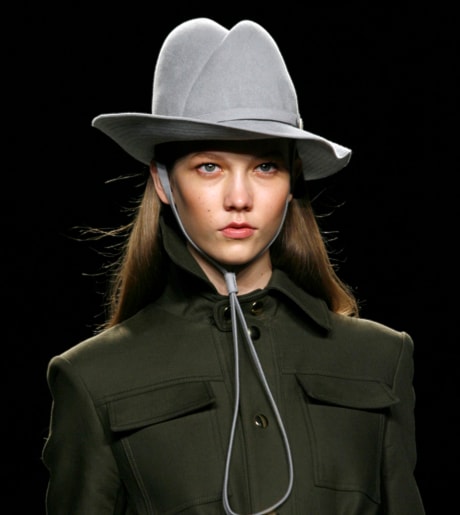NEW YORK — The fashion legacy of the First World War includes trench coats and shorter skirts. The Second World War popularized sportswear, strong shoulders and nipped waists. Vietnam inspired protest-driven army green and fatigues.
Wartime has heralded strong periods of American style, yet the wars in Afghanistan and Iraq seem to be barely a blip on the radar of the fashion community.
There’s been an uptick in camouflage prints and, a few seasons back, a mini boom of the kind of epaulettes typical of military jackets — but those styles were around before the current conflicts, and they’ll probably circle back again when they are resolved.
These wars, which began in 2001 and 2003, respectively, “have not been impactful,” at least not in obvious ways, says Kathleen Campbell, a fashion historian affiliated with the Goldstein Museum of Design at the University of Minnesota.
That minimal effect might be because they are not global wars dominating the conversation in the same sense as the World Wars, nor have there been huge public protests even if they’re considered unpopular by some.
However, she adds, when history judges this period with a long-view perspective, an influence — possibly the use of scarves and/or layers like the ones used in those regions to protect against weather extremes — might emerge. “I think we’re too close to analyze the effects now.
“It’s much easier to see in retrospect.”
There was no such time lag, though, during the Second World War, which changed the way Americans dressed forever.
Because of rationing of materials, domestic manufacturers began using nylon and rayon as alternatives to silk and wool, and the silhouettes became much leaner — requiring much less fabric.
Style cues were no longer coming from occupied Paris, so American designers stepped up to develop their own casual, separates-driven sensibility. The public was eager to show off its patriotism, making brass buttons and bomber jackets trendy items.
“You haven’t seen the military details in fashion now the way you had previously seen them during wars or in the ironic ways they were worn by the counterculture during Vietnam,” says Andrew Bolton, curator at Metropolitan Museum of Art’s Costume Institute in New York.
Apart from an increase in tan-and-brown “desert” coloured camouflage, recent fashion trends do not make such nods to the armed forces.
A practical way of dressing also typically emerges during wartime, while conspicuous consumption comes in times of peace, Bolton says. The last seven-plus years have brought both.
There is a noticeable push of local, homegrown talent at the moment, Bolton notes, although that’s probably more driven by the economy than by war. “The recession has affected fashion, and the recession is allied to the war in some respects,” he says.
The industry’s concern right now is to get people shopping again as consumer confidence fell in July yet again.
